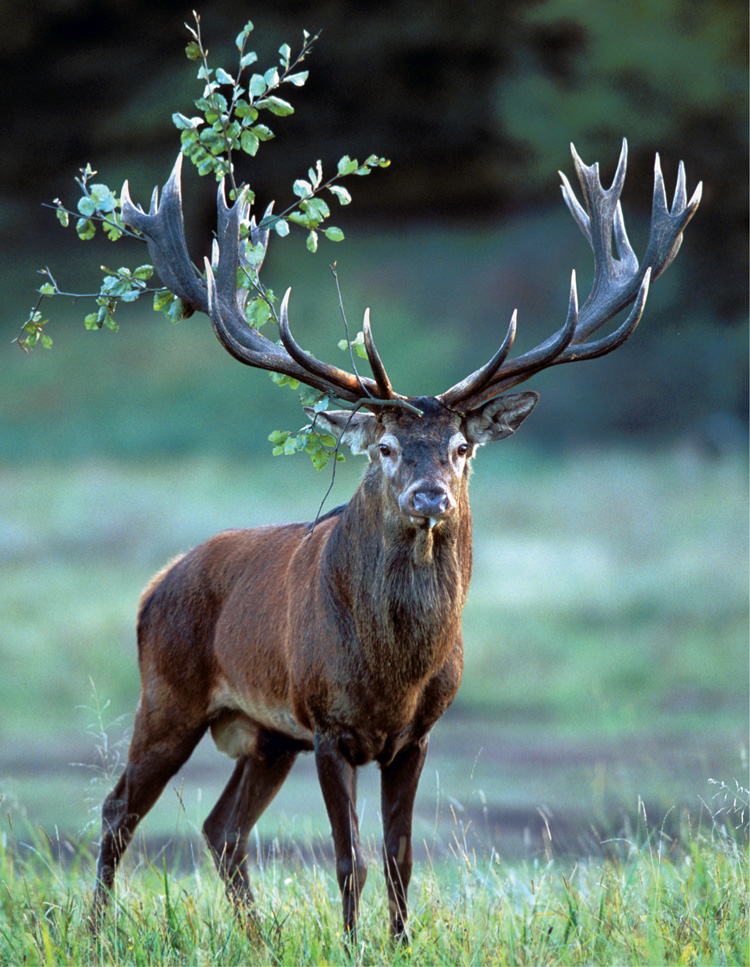
The bark, branches, and especially shoots of mostly young trees and bushes play an important role as food for many animals in winter. This is true for deer, goats, hares, as well as many small rodents and squirrels.
In most cases, tooth marks will be clearly recognisable in the bark; depending on the size and appearance of the individual tooth marks, you may be able to identify the animal responsible.
A rutting Red Deer. LG.

Red Deer gnaw marks on a pine tree, with peeled-off bark and resin. SS.

Elk gnaw marks on a young oak. AK.

In winter, Elk eat lots of pine needles. MOF.

The result of deer grazing on a young spruce. SS.

Mouflon tracks around a young oak. PB.

Mouflon with young. Biopix.

Field Vole
A stump worked on by a Field Vole; the marks of the front teeth are visible here. PB.
Upper right: Raspberry shoots cut down by Field Voles. PB.
Middle: A chewed-off spruce branch. PB.

Bank Vole
Lower right: Douglas fir with the feeding signs of a Bank Vole on the bark. PB.
Below: Tooth marks on the uppermost buds of a white fir. PB.
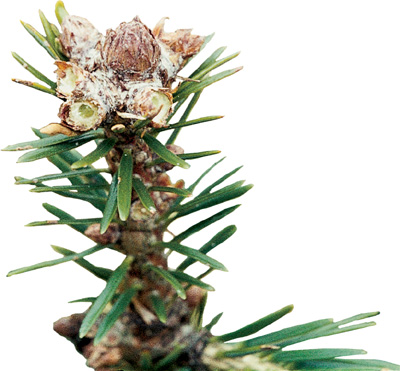



The powerful front teeth of the European Beaver, especially in its protruding lower jaw, are perfectly designed for tackling trees.

European Beavers have small ears, thick whiskers, and webbing between their toes. DW.

European Beavers need water and access to building materials. LGA.

A large birch felled by a European Beaver, resulting in the typical cone-shaped stump. LGA.
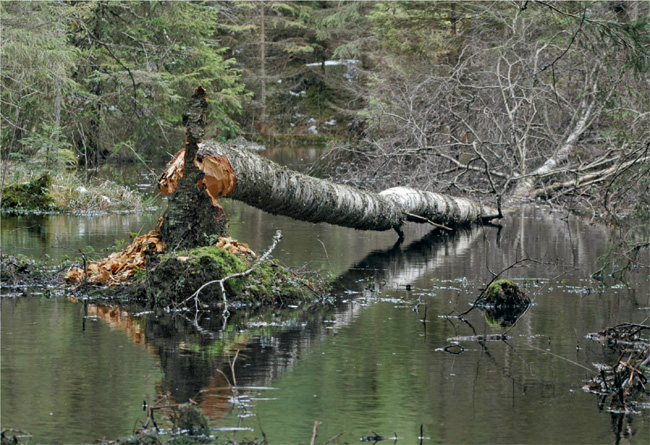
Occasionally European Beavers peel trees without felling them; in this case a Scotch pine. PB.
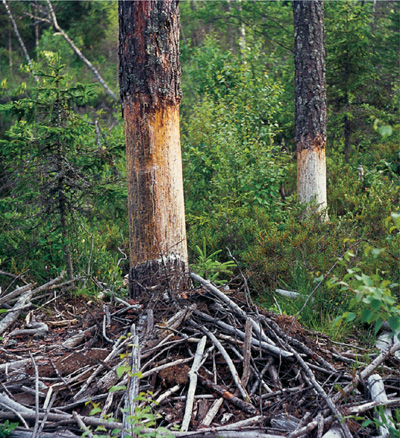
A partially peeled birch trunk with noticeable tooth marks. PB.


The trunk of a pine tree with visible bear scratches. EM.

The Wolverine has very sharp claws on its front legs and readily scratches bark. ME.

Northern Water Vole. Above: Tooth marks at the root of an apple tree in winter. The whole root may be eaten, and consequently the tree can easily fall. PB. Right: Tooth marks on an ash in summer; at the foot of the tree, chewed-off bits of bark. PB. Below, a Northern Water Vole. WP.



A Wild Boar roots around on the forest floor. Biopix. Inset: After a Wild Boar has wallowed, it often rubs off the mud on large trees.

A Red Squirrel has chewed off beech branches to get to the buds. PB.
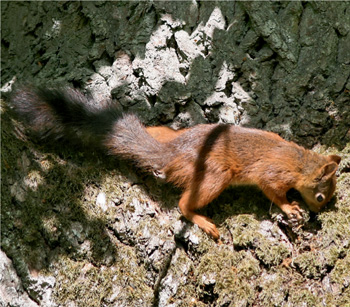

Red Squirrel tooth marks left while searching for bark beetle larvae hiding in the round holes. PB.

A branch criss-crossed by Brown Hare tooth marks. Below left: Hares feeding on fruit trees can cause the trees to die. PB.

The ears of a Brown Hare are larger than those of a Rabbit. LG.


Gnaw marks of a Mountain Hare on branches show as clean cuts, and are not frayed like those of deer. AK.

Brown Hares can gnaw the bark from small branches, particularly in winter. LAD.

Mountain and Brown Hare are very similar species (cf. p. 174). AK.


Rabbits readily gnaw the bark of branches, here a pine tree. AK.

Longhorn beetles comprise a group of medium-sized beetles; here a tanbark borer. The larvae live between the bark and the wood at the core of living and dead trees; they excavate a clearly visible system of tunnels. You can find the adult beetles on flowers.


Bark beetles are a group of very small beetles that breed between the bark and the core wood of various deciduous and evergreen trees (below: ash bark beetle, bark beetle, and a European shothole borer). Every species has its own tunnel pattern. AK.

